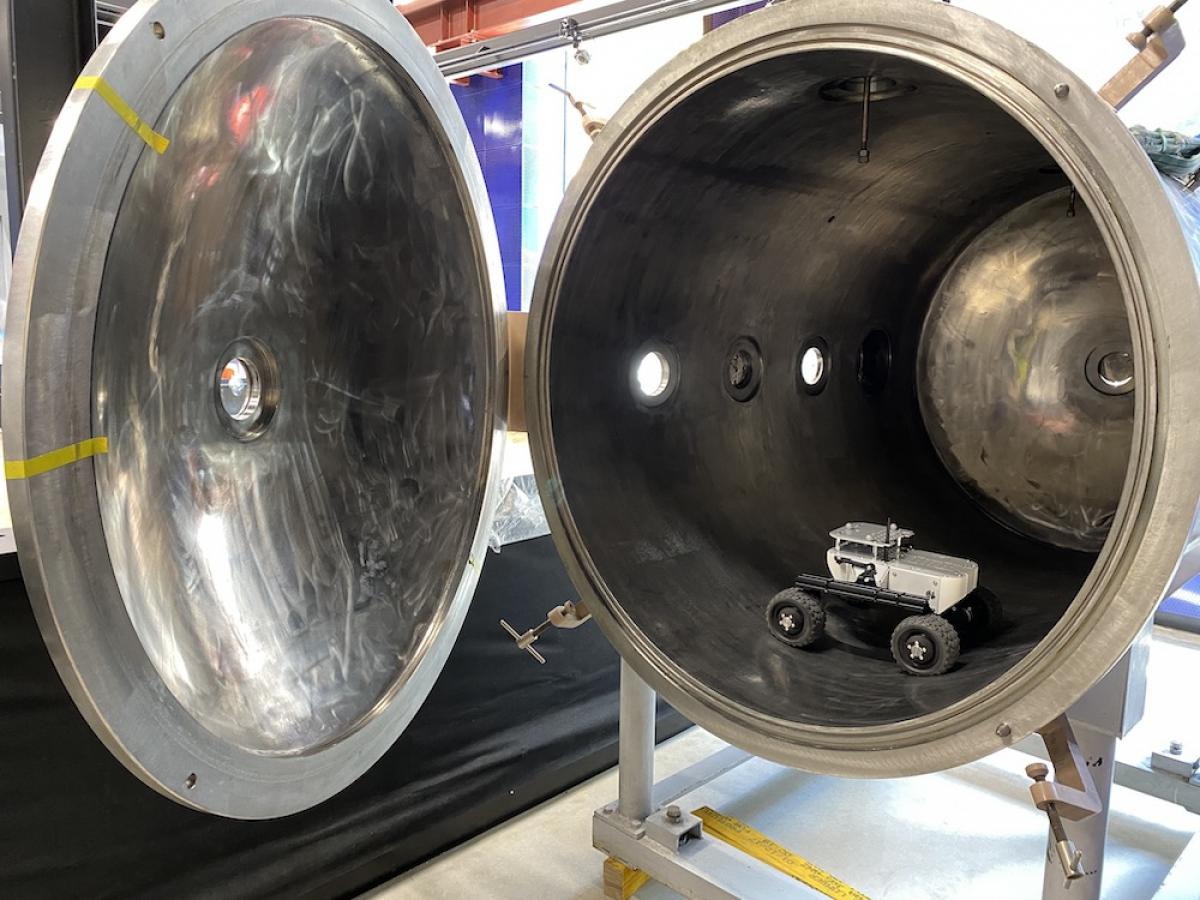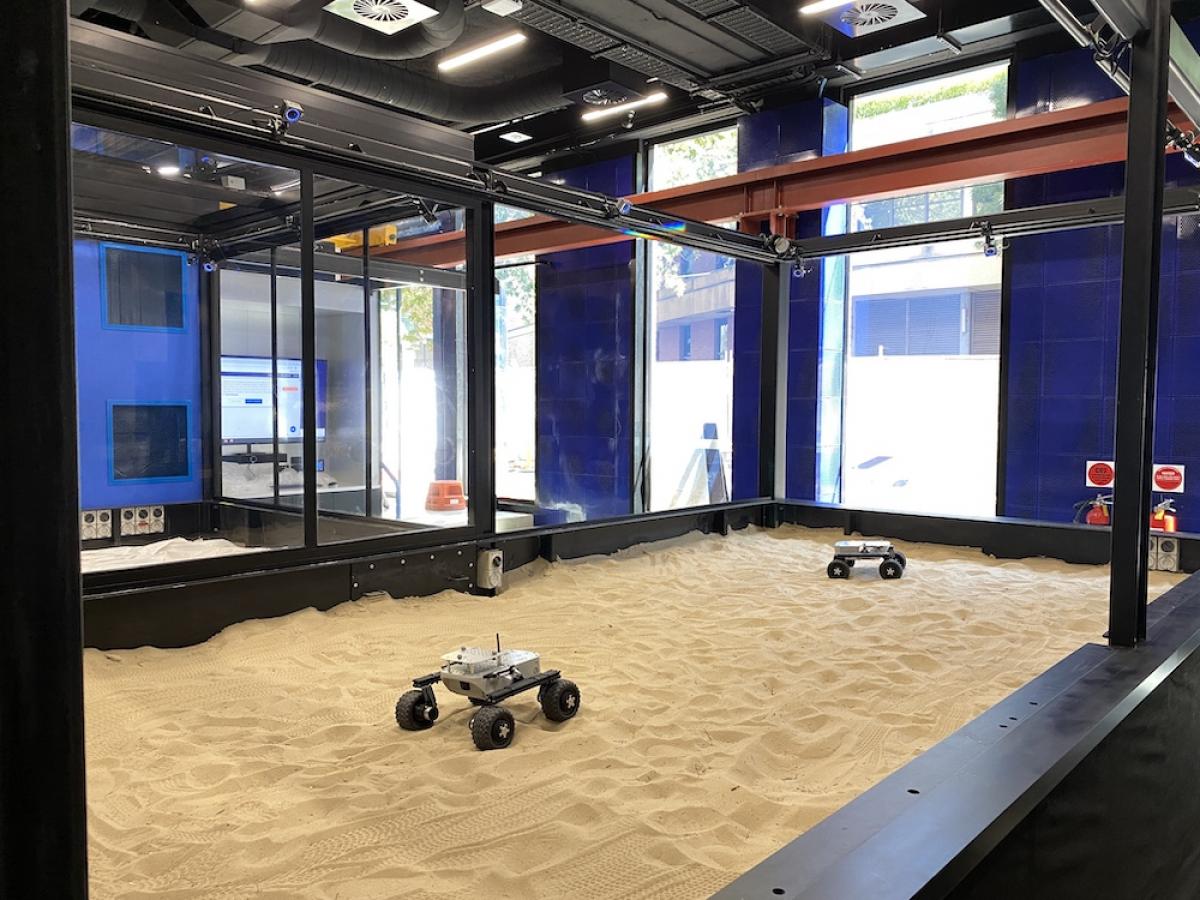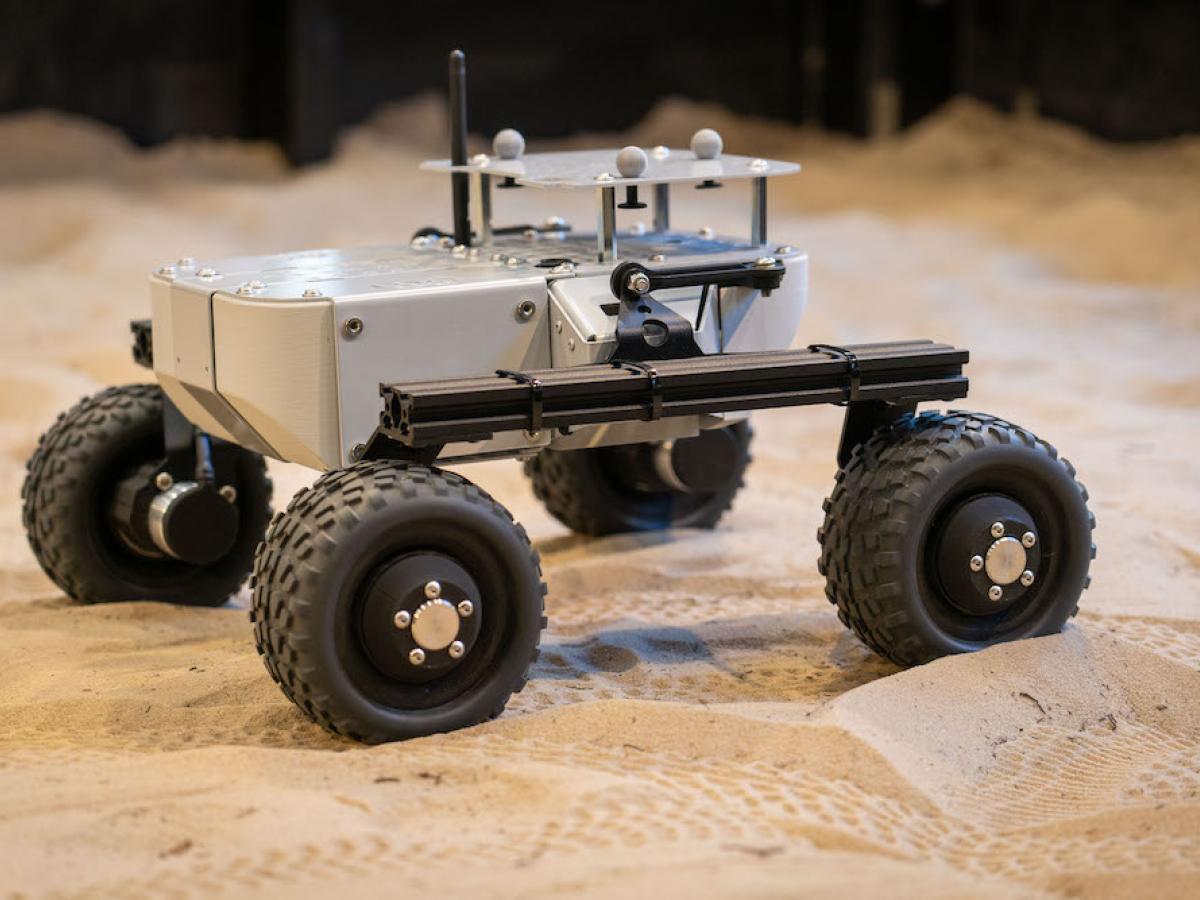EXTERRES Laboratory
The Extraterrestrial Environmental Simulation (EXTERRES) laboratory is a state-of-the-art facility specifically designed to simulate off-Earth environments.
This world-class laboratory provides researchers and industry with a range of services that support the design, testing and development of technologies and processes destined for the lunar and Martian surface. It includes two rover testing pits, two Regolith Thermal Vacuum Chambers (RTVACs) and a regolith processing zone. The laboratory will also house the most complete off-world regolith simulant library available in the southern hemisphere.
Regolith Thermal Vacuum chambers (RTVacs)

A range of customisable environments, including the lunar vacuum or Martian atmosphere, can be simulated in the laboratory's two RTVacs. Using liquid N2 cooling and radiative heating, a temperature range of +/ - 100°C can be achieved in near-vacuum atmospheric settings. A pilot RTVac will be first in the laboratory, allowing trays of regolith simulants to be inserted for surface simulation experiments. A larger RTVac (with an internal volume of 2.3 m3) is currently under development and will be fully operational in 2023.
Rover testing pits
These highly-controlled pits are covered by a 3D motion capture system, which allows detailed analysis of experimental robots, either remotely controlled from EXTERRES Mission Control, or operating autonomously. Blackout screens can be installed on the pit for trials of computer vision for automated navigation, simulating the challenging high contrast between light sources and the darkness of space in off-Earth environments.

Sand pit
The centre-piece of the laboratory is a 27m2 sand pit. The surface of the pit can be sculpted to simulate specific off-world surface conditions such a lunar landing site and is large enough to operate multiple small rovers simultaneously.
Regolith pit
Exposed by lifting one section of the sand pit, the regolith pit contains a lunar dust simulant. This extremely fine dust is contained within an airlock and can be used for research activities including lunar site preparation, and regolith excavation and drilling. This pit can also facilitate system-level testing for assessing equipment resilience to damage by lunar regolith.
Regolith processing zone
Equipment in this zone facilitates investigation into the formation of construction materials from lunar regolith and includes: a high-power laser, vacuum furnace, box furnace and large-scale 3D printer. This equipment will be used for a range of material studies including the production of lunar regolith simulant bricks. These bricks will be used for trials of lunar masonry structures including equipment shelters, habitats, roads and landing pads.
Research and industry applications

Current research being conducted in the EXTERRES laboratory includes:
- Investigation of lunar construction materials, structural design, geotechnical engineering and site preparation.
- Development of soft robots, swarm robot mining, ventilation and habitat design, regolith drilling and water extraction.
- Novel Fluorescence Moon-to-Mars Demonstrator project: Remote characterisation of materials for in-situ resource utilisation.
- Agricultural research examining the growth of selected plant species in extreme and hostile environments.
Early engagement with domestic and international space sectors have identified the EXTERRES laboratory as a key piece of R&D infrastructure supporting the development of space-bound technologies. The laboratory is also a key facility for national initiatives such as the Australian Space Agency's Moon to Mars Trailblazer program, providing the necessary experimental infrastructure to test rover technologies in an off-world analogue setting.
Industry and research collaborations are welcomed, and any interested parties are encouraged to contact us using the details below.
Further enquiries
- Email: kevin.farries@adelaide.edu.au
- Phone: +61 409 549 131
